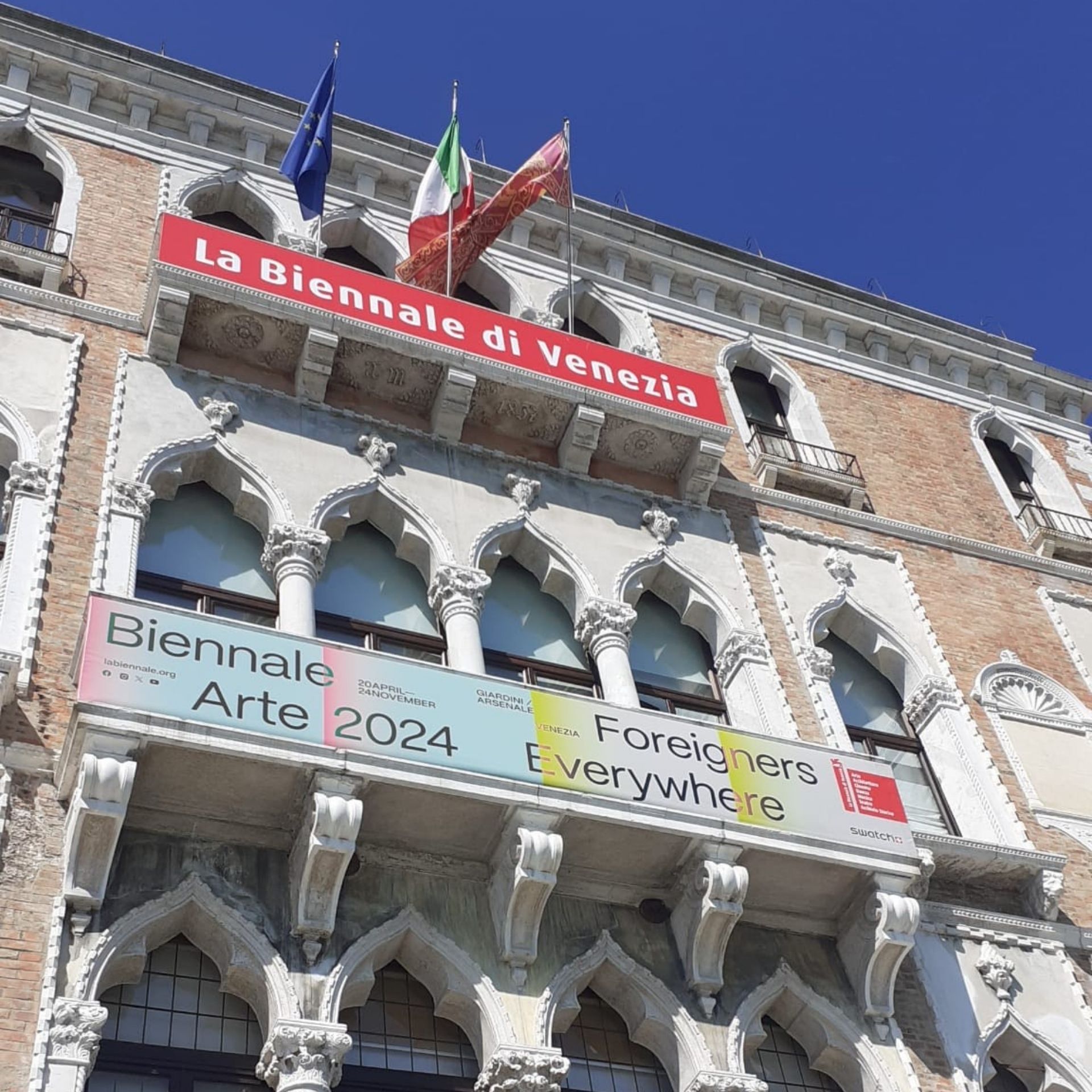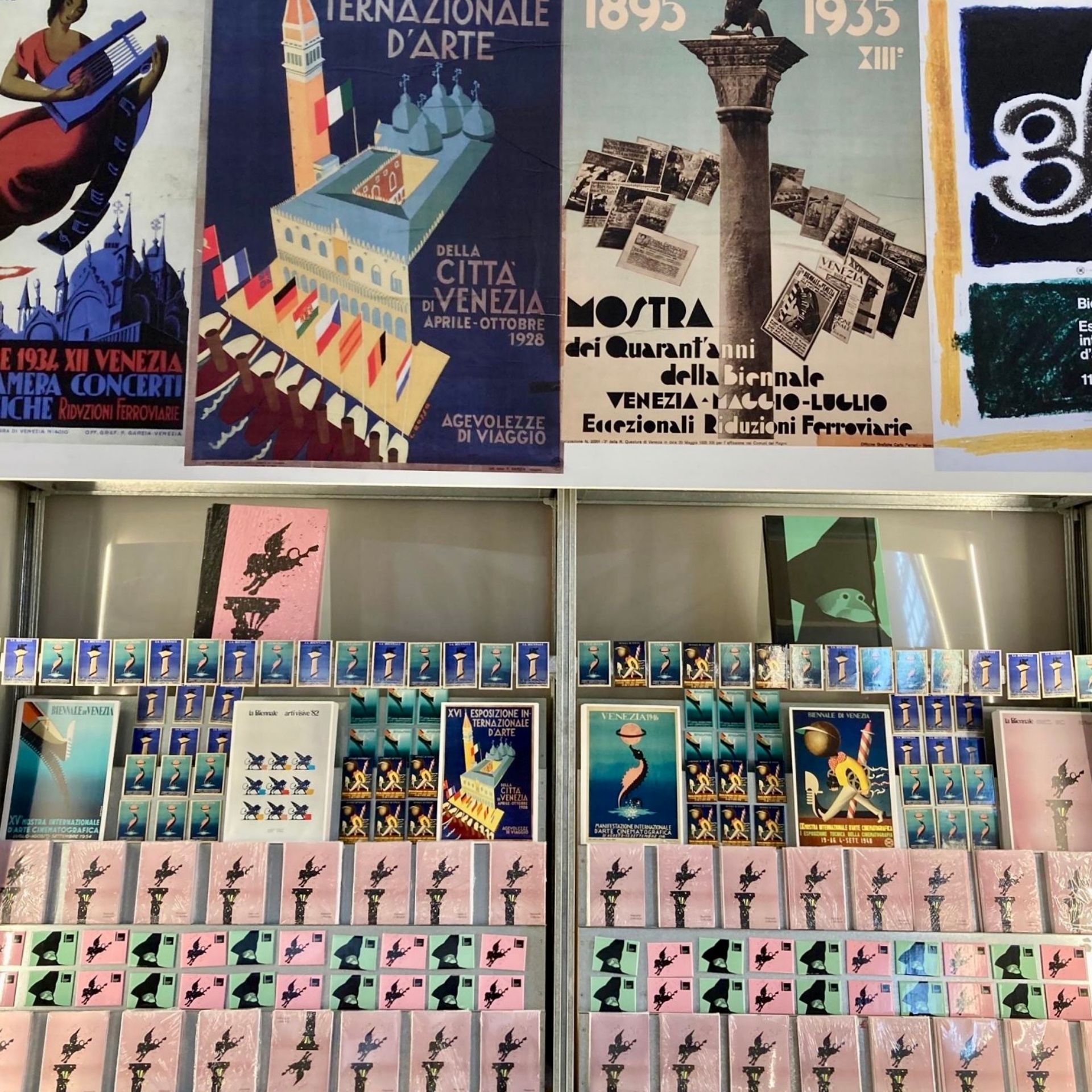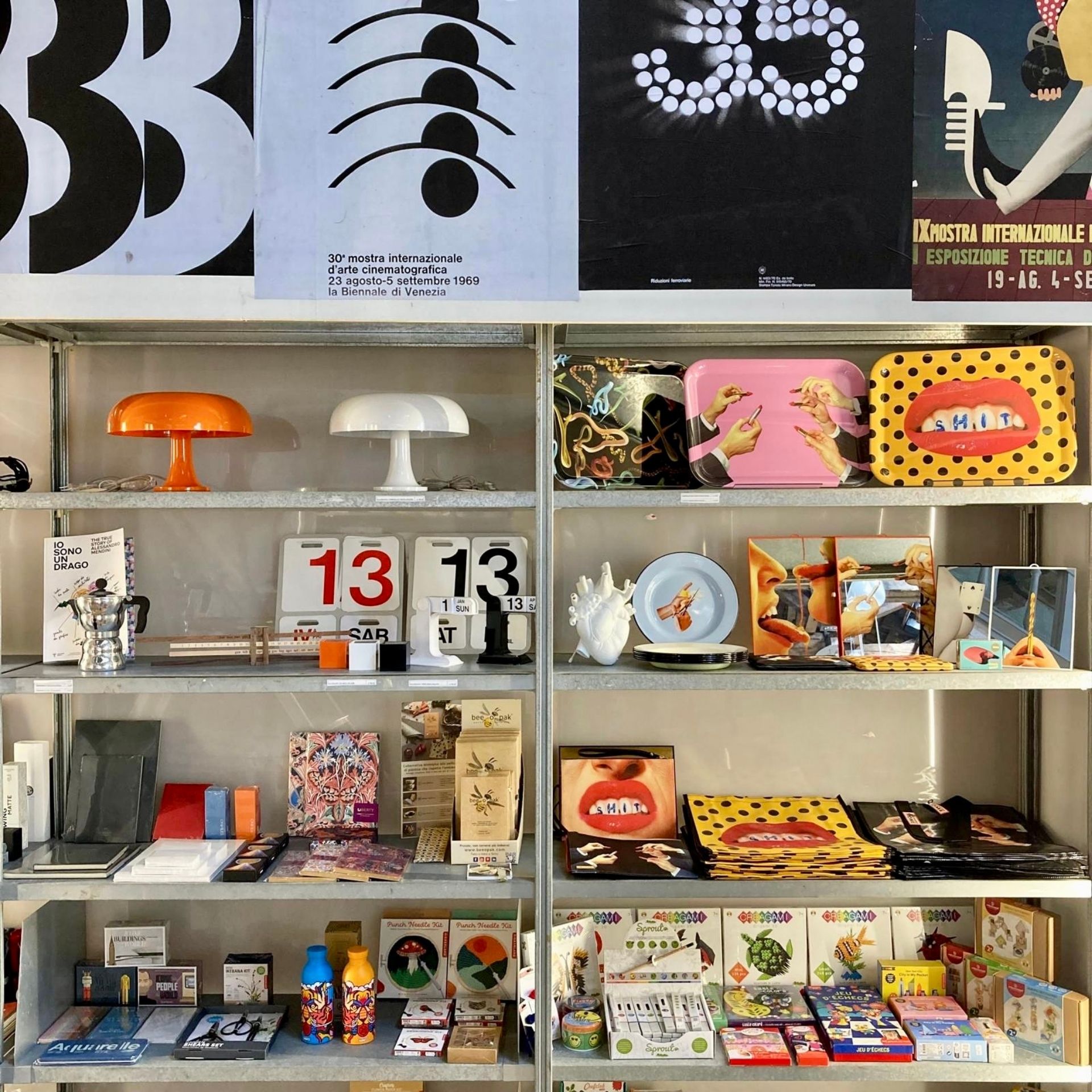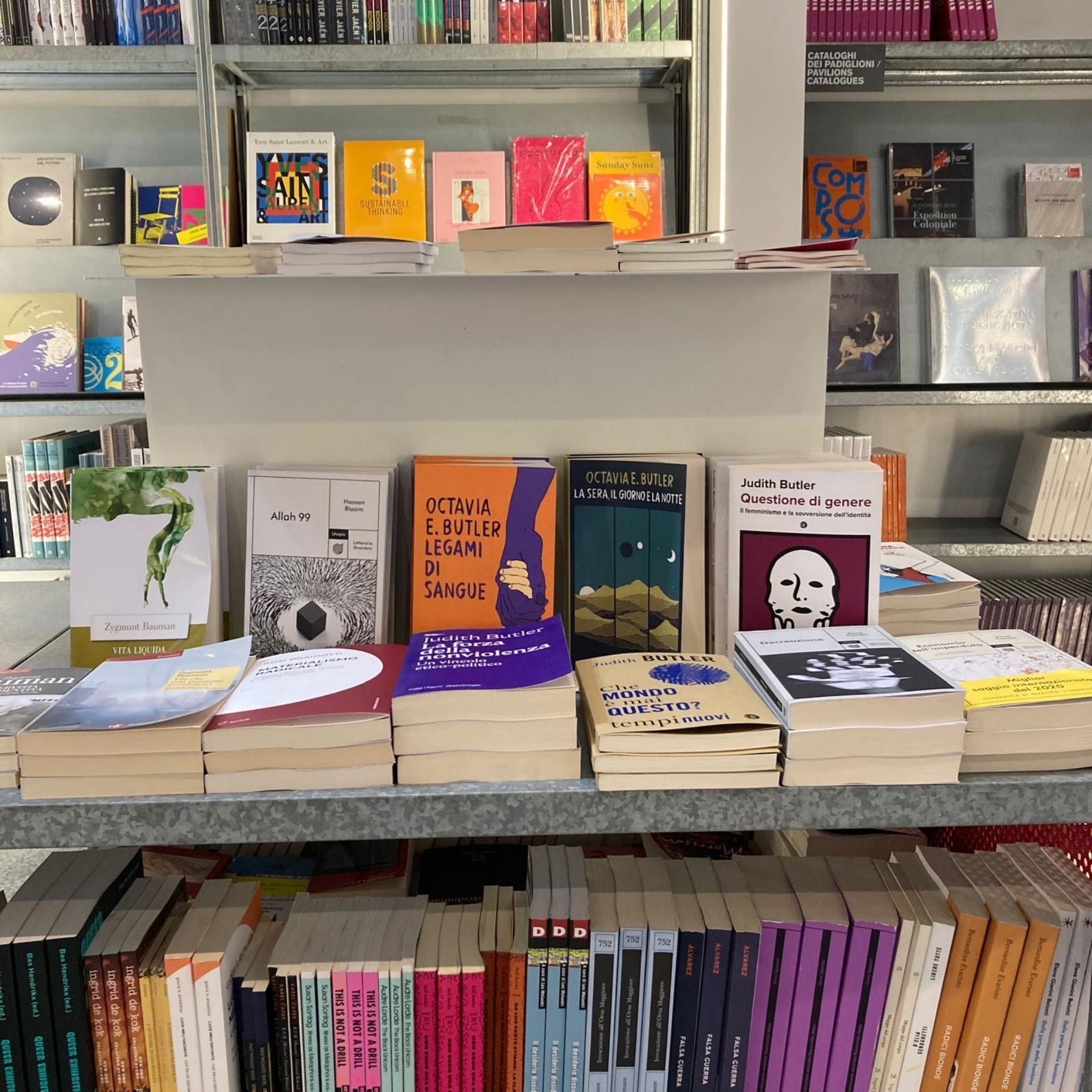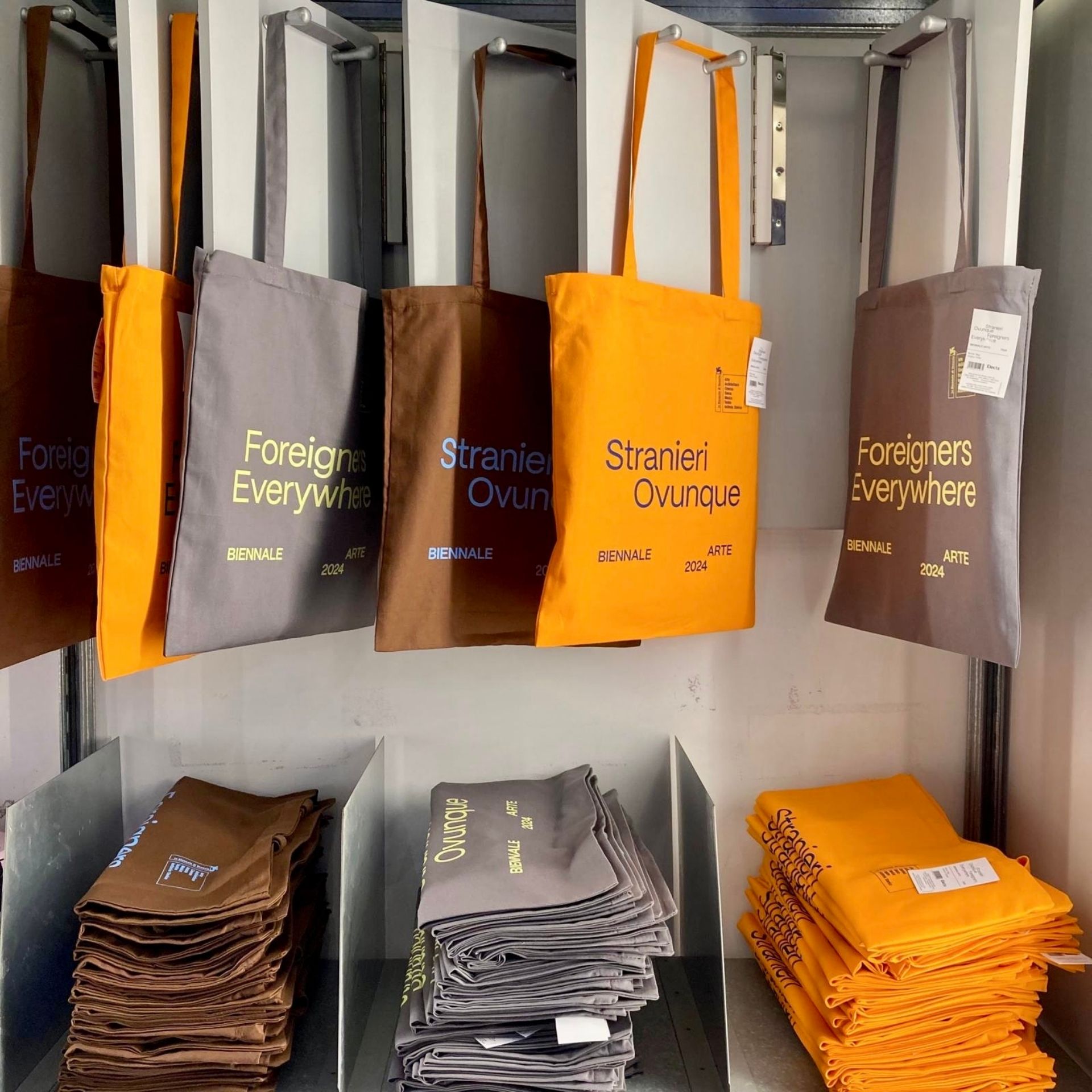Electa at the Venice Biennale
Electa will be present at the 60th International Art Exhibition with dedicated publishing offers and updated layouts for its bookshops at the Venice Biennale.
At the bookshop: selected spaces, objects and books
The bookshop at the Arsenale Corderie (project by Migliore + Servetto Architects, 2022), also coordinated with the bookshop at the Giardini della Biennale, will have a new identity thanks to the graphic project by the Sonnoli studio to enhance the Biennale’s historical posters, drawn from the Biennale Library – ASAC.
In the same spaces, Electa will be presenting six official merchandising lines, including institutional ones curated by Studio De Valence and Marco Camuffo, plus the line of novelties designed for this edition by the Brazilian studio Campo.
Maintaining a focus on reading, Electa has also worked on an ‘author’s’ selection of titles. In fact, part of the titles at the bookshops were entrusted to an external ‘search’, presenting an unprecedented slant on the many themes of contemporary culture suggested by the exhibition. Anna Toscano, a writer, photographer and journalist who teaches Italian at Ca’ Foscari and other universities, seized the challenge to cross the threads connected with Adriano Pedrosa’s Biennale Arte 2024, developing a selection of around 300 titles in Italian and English, ranging from novels to essays to poetry.
Philosophical books, anthropological essays, comic books, photobooks, anthologies and short stories were identified and listed under four keywords, four suggestions that run through their contents and trace their trajectory.
Geography, with themes related in different ways and forms to migration, decolonisation, travelling and movement, and thus to people, bodies, language and anthropology;
Language, with titles that explore language in the broadest sense of the term;
People incorporates the concept of individuals and collectivity and traces a path through identity, gender, bodies, activism, migration, ideas, feminism, anthropology, philosophy and decolonisation;
Venice is a tribute that includes texts for leaving the stereotypical image of the Lagoon and entering an awareness of what the city of the Biennale has been, what it is and what it can become.
The four themes, however, intentionally represent a non-categorical selection, in which the boundary between topics can be ‘disputed’ and a book can find a place in the ‘word’ next to it. As with genres, this bibliography is in fact designed to elide or shift the boundary between literary genres: poetry sometimes tends to prose and prose to non-fiction, which can also cross over into poetry or philosophy. There are no limits to this division. Indeed it is a sharing of words without borders, because “when we all recognise ourselves as foreigners”, as Julia Kristeva writes, borders no longer have any reason to exist.
The range of books is completed with the catalogues of the Pavilions and Country Participations, illustrated volumes on the artists present in the International Exhibition, new publications on art/photography/fashion/graphic design, art commentary and focuses on refugee artists and writers.
The Electa catalogues for the Art Biennale 2024
For the 60th Venice Biennale, Electa is publishing Due qui/To Hear, the guide to the Italian Pavilion, edited by Luca Cerizza and designed by Studio Folder, presenting the project by Massimo Bartolini in collaboration with Caterina Barbieri, Gavin Bryars and Kali Malone.
Among other Electa publications for the 60th International Art Exhibition, we would like to mention the catalogue of the Saudi Arabian National Pavilion, curated by Maya El Khalil and Jessica Cerasi, where Manal Aldowayanis exhibiting the work Shifting Sands: A Battle Song, and the book H2O Venezia: Diari d’Acqua – Water Diaries, curated by Mara Hofmann, the catalogue of a collective exhibition resulting from a residency programme for women artists who worked on a visual narrative about Venice.
Parallel to the 60th Venice Biennale, the exhibition Uzbekistan: Avant-Garde in the Desert. The Form and the Symbol, curated by Silvia Burini and Giuseppe Barbieri and promoted and supported by the Foundation for the Development of Art and Culture of Uzbekistan, is opening at Ca’ Foscari University. This exhibition introduces the Italian and international public to a little-known page of artistic history in the first half of the 20th century. It presents over 100 works from the Tashkent Museum and the Nukus Museum, long described as the ‘Louvre of the Desert’, highlighting the connection between the Russian Avant-Garde and Central Asian art. Electa Catologue (Italian and English editions).
Also available at Electa bookshops is the Guide to the Pavilions of the Venice Biennale since 1877, in Italian and English editions, edited by Marco Mulazzani.

